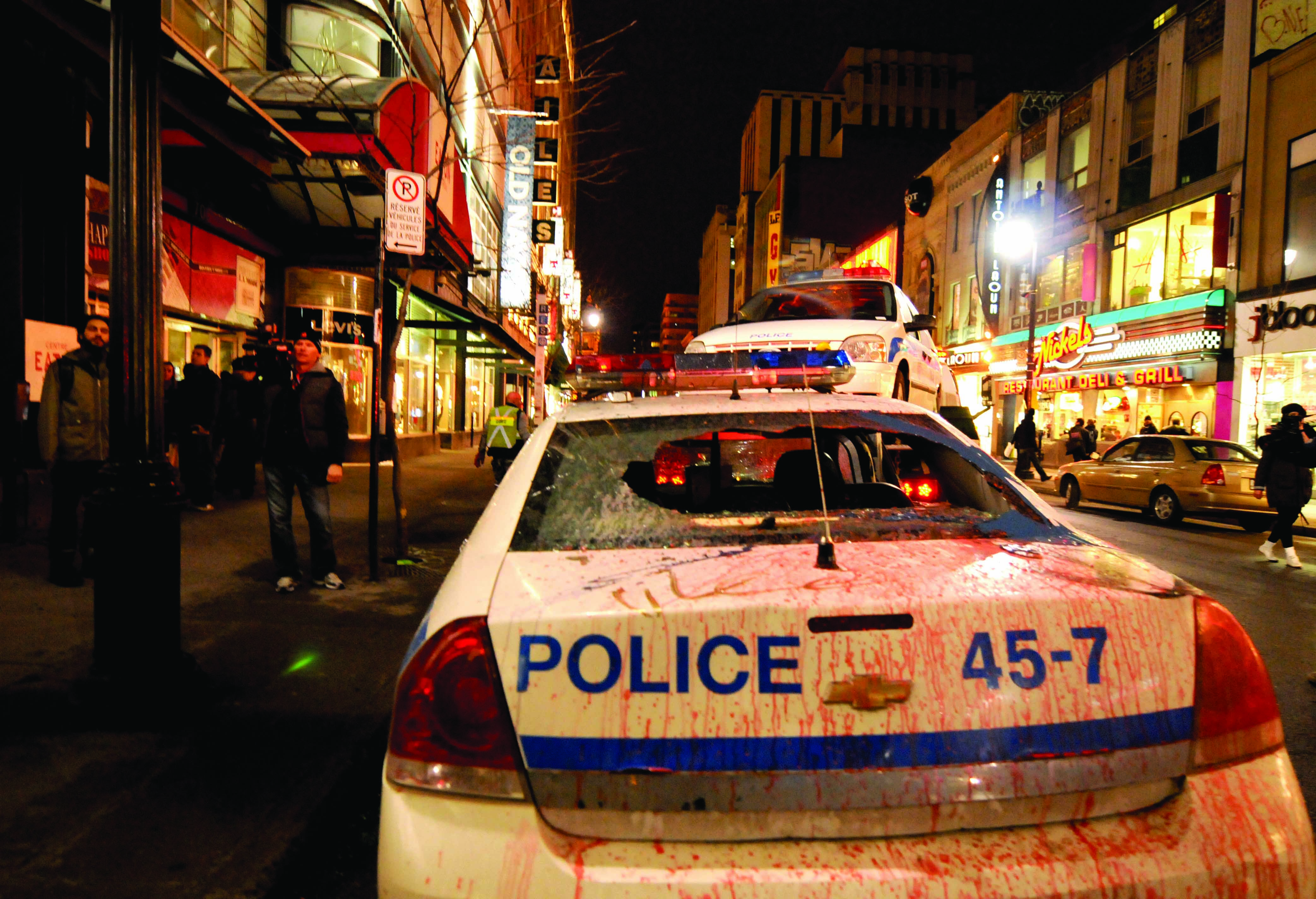Almost 1,000 citizens took to the streets last Thursday night to participate in the 16th annual
march against police brutality in downtown Montreal.
In the end, 226 protesters were arrested, 36 in isolated cases, and the others in a mass arrest, according to police chief Marc Parent.
Seven police officers were slightly injured in the process, as were two protesters. Of the 226 who were arrested, three adults and one youth were still in custody Friday morning. They are facing assault, weapons and breach of probation charges.
The march began relatively peacefully in Berri Square at around 5 p.m. and slowly made its way up Berri Street, surrounded on all sides by police forces, on foot, in cars and on horseback.
Some of the protesters were part of Secours Rouge, an organization that seeks to protect the rights of political, revolutionary and anti-capitalism prisoners. Sarah, a member of the group, said they were at the march this year to defend their rights.
“We are here to defend our right to protest, our right to be opposed to the anti-conformist
capitalist politics of the government,” she continued. “It’s a way for us to send a message to all those people who are marginalized in society and who experience daily police brutality or have been arrested.”
Less than half an hour into the march, some protesters began throwing projectiles at police officers. Marchers were informed that as long as they kept to the flow of traffic, they would not be stopped.
In defiance of this, the march turned towards the downtown core and police forces were immediately deployed in an attempt to disperse the crowds.
Police cruisers went speeding after the crowd, followed by lines of riot police in full gear. Officers proceeded to block protesters off at the corner of Sherbrooke and Aylmer Streets, hitting on their shields to scare people off and throwing concussion grenades at protesters.
However, nothing seemed to discourage the angry crowd. As protesters made their way down to Ste-Catherine Street, some kept throwing objects at the police and screaming obscenities. A few courageous protesters sat in the middle of the street, facing the police.
Despite the escalation, the most motivated protesters continued on, splitting off into smaller groups as police blocked off certain streets, effectively dividing the mass.
Those left at the front proceeded to vandalize stores and smash two police cruisers, one of which was flipped over.
With such a heavy police presence, many have voiced concerns about how much recent protests, including those against tuition hikes, have been costing Montreal police.
SPVM spokesperson Anna-Claude Poulin said it would be some time before they would be able to release a financial estimate.
“The information regarding the cost or the resources implied in the recent protests is not going to be compiled before the end of the events,” wrote Poulin in an email to The Concordian. “It is impossible for us to even make an estimate of the situation considering the magnitude of it.”
Speaking to reporters last Friday, Montreal Mayor Gerald Tremblay said his patience had run out with the annual march, and indicated that he was prepared to look at “all options” on how to deal with future demonstrations in Montreal’s downtown core.
The mayor’s press attache, Darren Becker, told The Concordian that the city has been tabulating the costs of the recent protests, and plans to make an official request to the provincial government for compensation.
“Montreal is the metropolis of Quebec and the provincial government must ensure that the city has all the means necessary to deal with these public demonstrations,” he said. “Once we finalize the costs, we will inform [Quebec City]. In other words, no official request for compensation has been made yet. The city plans to though.”
With files from Marilla Steuter-Martin.
